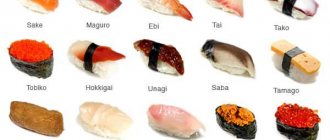Red fish, including salmon, is beneficial for humans, but in some cases, if deadlines are not met and conditions are violated, it can be harmful. The storage duration differs and depends on the conditions created and the quality of processing. Fresh keeps better in the freezer, while salted keeps well in the refrigerator. In order not to spoil valuable seafood, the optimal storage times for red fish in different conditions are taken into account. Initially, a good product is selected by evaluating individual criteria.
Is it possible to freeze salted fish in the freezer?
Salting and freezing are two of the most popular ways to store perishable foods. What if you combine them? Alas, this does not increase the storage duration in any way, but the convenience becomes obvious.
Of course, if you have purchased a couple of small slices of fillet, the question of whether it is possible to freeze salted salmon fish is unlikely to interest you. Even a small family can consume such an amount faster than the shelf life expires.
Another case is if you bought a large fish and plan to cut it into parts in order to cook it for a long time. We hope there is no need to convince you that by defrosting a large carcass each time, cutting off the necessary piece and freezing the rest, you will ultimately spoil the fish.
Repeated freezing is much worse for raw fish than if you salt it and then store it in the freezer. However, salted fish fillets also have certain restrictions related to the type of fish.
So, to the question whether it is possible to freeze salted pink salmon, the answer will be positive, with one caveat. It is pink salmon that is considered rather dry in comparison with other salmon, so if all conditions are met, it can be used as an appetizer or in salads. But after soaking and frying this fish, you will not get the most delicious dish.
Is it possible to freeze lightly salted fish?
Although the degree of salinity of fish does not in any way affect the duration of its frozen storage, such questions arise and require an answer. First, let's still indicate the freezing conditions under which it is advisable to store salted salmon.
The fillet can be cut into slices of any size, but package them in such a way that the entire defrosted portion is used within a couple of days at most. In this case, the pieces can be made quite large, for the purpose of subsequent slicing, and thin, ready for making sandwiches.
Is it possible to freeze lightly salted salmon? Yes, before packaging, fish slices should be slightly moistened with 3% vinegar, or better yet, a weak solution of natural lemon juice, then lightly greased with olive oil or fish oil. Next, divide the fish into portions and seal it in plastic bags.
For better preservation of salted fish, it is recommended to wrap it in parchment paper after greasing. One layer is enough, but carefully wrap the package on all sides, then put it in a bag or cover it tightly with cling film.
The recommendations listed above also apply if your fish is salted more strongly. In other words, is it possible to freeze salted salmon - of course, yes. Moreover, the technology can be taken completely from the example above.
What are the temperature storage conditions and defrosting methods? The optimal temperature for freezing salted salmon is –18 degrees. Typically, domestic freezers cannot provide lower values. If your refrigerator is equipped with a “shock freezing” function, then you should definitely use it.
There are recommendations to freeze salted salmon in two batches:
The frozen shelf life of cut salted fish is up to 4 months. If you intend to freeze whole salted carcasses, then it is better not to store the fish in this form for more than 80 days.
You cannot defrost salted fish by heating in any way. You will have to wait until it slowly thaws in the general section of the refrigerator. For this reason, it is worth cutting the fillet as thinly as possible so that it thaws faster.
Do not store such fish unfrozen for a long time; despite strong salting, it spoils noticeably faster than simply salted fish.
Source
Period and conditions for storing salmon in the refrigerator and freezer
Salmon is a commercial salmon fish (ocean and lake), which can reach a length of 1.5 meters. It is valued for its excellent taste and healthy qualities. And it is used not only boiled or baked, but also salted. Salted salmon is considered a delicacy. Some housewives, in order to save money, salt this fish on their own, so as not to overpay for a ready-made product. But due to the large size of salmon, the question often arises of how to store salmon at home. Answers to this and other questions can be found in this article.
Is it possible to eat salted trout?
Trout lives in cold water. Such a habitat cannot be called favorable for helminth infection. Nevertheless, parasites also live in this fish.
- The tapeworm is wide. Helminth capsules resemble grains of rice covered with a transparent shell. When introduced into the internal organs of a fish or a person, the walls of the capsule are destroyed, and the worm begins to grow, reaching a length of 5 centimeters in the body of a fish and 12 meters in a person. Invasion is accompanied by anemic conditions and skin itching.
- Trematodes. The transparent yellow or brown helminth is pear-shaped. Its dimensions are small: 0.5–1 mm in length. Infection with trematodes occurs with a noticeable enlargement of the liver, stool disturbances, pain in the pancreas area, and vomiting attacks. Over time, these symptoms are accompanied by neurological disorders, including epilepsy.
- Anisakids. Roundworms from the genus of nematodes have a yellowish or light brown color and a spindle-shaped body with a rounded tail. The disease is caused by anisakidosis, which occurs with symptoms similar to respiratory infections: fever, cough, sore throat. In the absence of treatment, intestinal obstruction develops, which without surgical intervention leads to intestinal perforation and death.
Salted trout has a bright taste and a lot of useful properties, so it’s hardly worth denying yourself your favorite delicacy. To prevent helminthic infestation, you need to eat trout that has undergone appropriate processing. Under the influence of salt, parasite larvae die:
- after 9 days when salted in a hot marinade;
- after 13 days when salted in a cold marinade;
- after 12 days using the dry salting method (the gutted trout is sprinkled with dry salt on the outside and inside).
- The tapeworm is wide. Helminth capsules resemble grains of rice covered with a transparent shell. When introduced into the internal organs of a fish or a person, the walls of the capsule are destroyed, and the worm begins to grow, reaching a length of 5 centimeters in the body of a fish and 12 meters in a person. Invasion is accompanied by anemic conditions and skin itching.
- Trematodes. The transparent yellow or brown helminth is pear-shaped. Its dimensions are small: 0.5–1 mm in length. Infection with trematodes occurs with a noticeable enlargement of the liver, stool disturbances, pain in the pancreas area, and vomiting attacks. Over time, these symptoms are accompanied by neurological disorders, including epilepsy.
- Anisakids. Roundworms from the genus of nematodes have a yellowish or light brown color and a spindle-shaped body with a rounded tail. The disease is caused by anisakidosis, which occurs with symptoms similar to respiratory infections: fever, cough, sore throat. In the absence of treatment, intestinal obstruction develops, which without surgical intervention leads to intestinal perforation and death.
How to choose
You can find salmon in different forms on store shelves. It happens:
Each species has its own characteristics, but there are general rules that you need to remember when buying this fish.
When choosing a fresh carcass, look at the eyes. In fresh fish they are transparent.
The skin of good quality salmon is shiny and the meat is dense. The smell is pleasant, fresh, and the gills are bright red. White, gray, green - indicators of staleness of the product.
Sliced fish should not be purchased for several reasons. Firstly, no one will be able to determine its degree of freshness by appearance, and secondly, it will be impossible to understand what kind of fish these pieces are from. In addition, unscrupulous manufacturers often use substances that are harmful to health, such as benzoic acid, as preservatives.
How to determine the freshness of trout?
How to tell if fish has gone bad
- presence of a sticky layer. It appears only on a fresh carcass when it begins to deteriorate;
- the appearance of a strong unpleasant odor. It occurs both in fresh meat and in smoked and salted meat. ...
- formation of milky spots. ...
- yellow gills and cloudy eyes. ...
- the appearance of mucus when pressed.
4 Feb
2022 Interesting materials:
What is a participial idea, participial phrase? What is a participle phrase examples 7th grade? What is a bride's dowry? What is a transfer order? What is the surrounding area of the building? What is a note in Word? What is the default printer? What is a natural area The world around us, grade 4? What is presence of mind? What is enterprise privatization?
Refrigerated storage
Salmon purchased in vacuum packaging can be kept in the refrigerator for 30 - 45 days. And if the package has already been opened, even if stored on a refrigerator shelf, the product will need to be consumed within 24 hours.
The shelf life of salmon in brine is longer, but it will depend on the degree of salting.
The shelf life of chilled salted salmon is shorter than when frozen. Therefore, for longer-term preservation, it is placed in the freezer.
Is it possible to freeze smoked salmon?
Fish that has been hot smoked can be stored in the refrigerator for up to 3 days, for cold smoking - 8-10 days. ... Smoked fish can be frozen in vacuum packaging, which will extend its shelf life. If you freeze the product, the shelf life will be about three months.
Interesting materials:
How many days a year can there be no hot water? How many days a year are there on Mercury? How many days a year is paid sick leave? How many days a year does a border guard have? How many days a year do they study in Russia? How many days a year do you go to school? How many days a year on average? How many days are there in March 2020? How many days are there in a normal year? How many days are there in a leap year? How many days were there in 2007? How many days are there in a normal year? How many days are there in a leap year?
Frozen storage
Freezing and storing salmon in the freezer must follow certain rules:
There is also a way to store salmon in an ice crust. To do this, chilled fish is dipped in water and frozen until a crust of ice forms on its surface. Then it is dipped into water again and frozen. This procedure is repeated until the fish is encased in a dense ice crust, after which it is placed in a bag and placed in the freezer.
You need to defrost fish in the refrigerator. If this is not possible, gradual defrosting in ice water is allowed.
Lightly salted, salted and smoked fish are also frozen, divided into portions.
Storing salted and lightly salted salmon
Salting salmon is the most common way to process it. Even a very large amount of salt cannot spoil it. This fish (like lard) absorbs only the required amount.
Before storing salted salmon without refrigeration, it is peeled, divided into small parts, placed in a glass (ceramic) container, tightly closed with a plastic lid and wrapped in film. In such conditions, lightly salted salmon can be stored without refrigeration for up to 10 days.
General storage table
Storage
Shelf life
Vacuum storage
If the packaging is not damaged, lightly salted and salted fish in a vacuum can remain fresh for up to 60 days.
After opening the package, the shelf life of salmon is 24 hours.
Depending on the temperature conditions, the shelf life of this product in a vacuum may vary:
These indicators refer to the total shelf life of salmon from the moment it is packaged, not purchased. Thus, fish packaged 10 days ago, based on storage conditions, can remain fresh for 20 to 25 days.
Source
Rules and methods for storing salted red fish
Red salted fish is a valuable source of essential omega acids. This product gives beauty, youth, is useful for men, women, children, and the elderly. Previously, it was considered a delicacy. Nowadays it appears more and more often on our tables and is present in the daily diet. Therefore, every housewife should know the storage rules, expiration dates, and signs of spoilage.
Fish of the salmon family has a delicate taste and light aroma, so it is often used lightly salted. This option is most susceptible to damage. If there is insufficient salt in the product, bacteria actively develop and the risk of poisoning increases. Let's look at how to store salted red fish at home, how much and where it is better to do it, what kind of dishes and packaging to choose.
How to choose the right fish
Only fresh red fish can boast of a pleasant taste and high content of valuable nutrients. This is not always indicated by the expiration date on the packaging. Temperature conditions are often violated during transportation and storage of perishable goods. Sometimes the manufacturer is disingenuous. Therefore, housewives often make salting themselves.
The main sign of quality is a pleasant fishy smell. In salmon breeds it is light, without the rich aroma of mud or swamp. This fish is found in clean water, or it is grown in artificial conditions.
Other criteria for a quality product:
When purchasing a whole fresh or frozen carcass, the scales are evaluated. It is silver, without rusty spots, and has a slight shine. The eyes are transparent steel-colored, the fins are not cut off, the gills are clean and bright in color. Any punctures, cuts, or damage lead to premature damage.
Red salted fish at home can be stored in the refrigerator for up to 45 days if it is vacuum-packed. In ordinary dishes, bags, containers, the shelf life in brine lasts from 7 to 30 days, depending on the concentration. In dry form, without special packaging, the shelf life in the refrigerator is no more than 48 hours. On the counter at room temperature for only 2 hours.
Teshu salmon
- Preparation time: 1 day.
- Number of servings: 5 persons.
- Calorie content of the dish: 191 kcal.
- Purpose: for a snack.
- Cuisine: Russian.
- Difficulty of preparation: easy.
A simple option to do at home would be to salt salmon bellies, which are perfect as an appetizer for foamy drinks. The salting process lasts quickly, without requiring the housewife to have special culinary skills and abilities. The result is a delicious, aromatic dish that will appeal to all family members or guests present at the feast.
- fish bellies – 0.45 kg;
- salt – 1 tbsp;
- granulated sugar – 1 tbsp;
- citric acid – 10 g.
- Rinse the bellies thoroughly and dry with paper towels.
- Combine salt, sugar, citric acid, stir well.
- Place the bellies on the bottom of a flat glass plate, cover with the curing mixture, rub on all sides, and cover with a lid.
- Salt in the refrigerator for 20 hours.
- Rinse the bellies with running water to remove excess spices and juice, and store in the refrigerator.
Found an error in the text? Select it, press Ctrl + Enter and we will fix everything!
- Gut the fish, clean the entrails, cut off the fins, head, and tail.
- Cut in half, pull out the backbone, remove small bones with tweezers. Wash, dry, place in a deep container.
- Boil water, add salt, sugar, pepper, cool.
- Pour brine over the fillet, cover with a lid, and leave in the refrigerator for a day.
Storage conditions for salted red fish
The shelf life of factory-made salted fish is indicated on the label. If the manufacturer uses vacuum packaging, it can reach 45 days. Once the package is opened or damaged, the product must be consumed within 24 hours. The shelf life of unpackaged brine depends on its concentration. Dried fish lasts the longest.
Standards approved by SanPiN:
At a temperature of 1 to 4 degrees, lightly salted fish without vacuum packaging and brine can be stored for up to 2 days. Every minute on the table shortens the shelf life.
By adding/using oil during salting, the shelf life of red fish increases.
For this reason, the finished product is wiped dry, filled or sandwiched with vegetable fats. It is advisable to use types with a neutral aroma that will not interrupt the natural taste. Refined sunflower oil is suitable for these purposes and is most often used.
Dry method
- Preparation time: 1.5 days.
- Number of servings: 8 persons.
- Calorie content of the dish: 194 kcal.
- Purpose: for a snack.
- Cuisine: Russian.
- Difficulty of preparation: medium.
A quick dry method can be used to salt salmon at home with salt and sugar. If you like sourness in meat, then you should also add lemon juice to the curing mixture. This way the fish will become more piquant in taste, acquire a new aroma and will not turn into mush when slicing. The optimal ratio used to salt fish is 1 part granulated sugar to 2 parts salt.
- salmon – 0.8 kg;
- sugar – 40 g;
- salt – 80 g;
- lemon – 1 pc.
- Prepare the fish: remove the entrails, cut off unnecessary parts, remove the backbone and bones after cutting in half. Rinse with running water, dry thoroughly with paper towels.
- Rub the meat with a mixture of spices and squeeze out lemon juice.
- Cover with a lid, press down, and salt for 12 hours.
- Remove the pieces, peel, and leave in the refrigerator for another day.
- After this, you can serve, after cutting with a sharp knife.
Methods for storing salted red fish at home
If lightly salted fish is not purchased in vacuum packaging or is salted at home, then the shelf life of the product is limited to two days. When in contact with other ingredients, bacterial growth accelerates. Therefore, preparing salads and sandwiches cannot be put off. And you can only store it in the refrigerator or freezer, subject to the recommended temperature conditions.
Salting red fish
How to store in the refrigerator
How long salted fish is stored in the refrigerator is affected not only by temperature. It is important to choose the right cookware. The worst option is plastic containers. They absorb the odors of previous food, detergents, and then release them into the product. It is wiser to choose glass, ceramics, enamel bowls, and thick plastic bags. Red caviar in industrial packaging is also excellently stored in the refrigerator.
How to properly prepare:
Leave or remove skin? A matter of personal taste. It does not affect the safety of the product in large pieces with backbone and bones. It is better to keep fillets and cuts clean and remove any excess.
Freezer storage
A common question is: can salted red fish be stored in a regular freezer? This storage method has many opponents. The reason is unscrupulous producers, the use of previously frozen and then thawed carcasses for salting.
Freezing salted red fish
Pros of freezer storage:
Minuses:
Freezing trout, salmon, pink salmon, and other types of red fish is not prohibited. You will always have an ingredient for a salad or sandwich on hand. It is only important to observe two basic conditions - send only high-quality food products into the chamber, and do not allow them to thaw at room temperature. It makes more sense to place it on the refrigerator shelf.
How to freeze correctly:
An additional container prevents the loss of aroma and prevents the entry of foreign odors. You can use a thick bag instead.
How to store without refrigeration
At room temperature, salmon is only safe for two hours. If it is initially cooled to 0-2 degrees, then the time increases to 4 hours. If you don't have a refrigerator, it is recommended to immediately freeze the excess. In rare cases, alternative options may be used.
Where to store red fish:
The temperature should not exceed 4 degrees. But the shelf life in this case is not equal to the parameters for the refrigerator. Minor air fluctuations in the basement or on the balcony negatively affect the quality of the fish and lead to premature spoilage.
Quick salting
- Cooking time: 3 hours.
- Number of servings: 10 persons.
- Calorie content of the dish: 197 kcal.
- Purpose: for a snack.
- Cuisine: Russian.
- Difficulty of preparation: easy.
If you need to salt salmon in a quick way, then you should pay attention to the following recipe. He will explain in detail how to quickly salt fillet to obtain a delicious homemade product. The cooked fish turns out lightly salted, but has a pleasant taste. It is ideal for cutting on a festive table, creating sandwiches or canapés.
- salmon – 1 kg;
- water - liter;
- salt – 80 g;
- sugar – 60 g.
- Gut the fish, remove the head, fins and tail. Cut in half, remove the backbone, fillet, cut into thin strips.
- Pour cold water in which salt and sugar are dissolved. Keep at room temperature, then refrigerate.
- After three hours, the home-style dish is ready, it is served on the table in the form of salads, appetizers, and canapés.
- Cooking time: 1 hour.
- Number of servings: 10 persons.
- Calorie content of the dish: 193 kcal.
- Purpose: for a snack.
- Cuisine: Russian.
- Difficulty of preparation: easy.
Another quick option for getting a tasty product is to salt the salmon in pieces. The following recipe will help you figure out how to cook such fish if there are only a couple of hours left before the guests arrive. In an hour, the meat will be saturated with salt, resulting in a pleasantly spicy taste and rich aroma. Unlike other options, fine salt is used here.
- salmon – 1 kg;
- salt – 100 g;
- pepper – 20 g.
- Defrost the fish if necessary, clean it of fins and heads, and gut it if it is whole. Cut in half along the spine, removing all bones to form a fillet.
- Cut the meat into small pieces, place in a plastic container, sprinkle generously with spices, repeat layers if necessary.
- Cover with a lid for an hour at room temperature, wrap in a towel. During this time, the meat can be salted to the desired taste.
- Drain the liquid and clean off any remaining spices. Cool briefly.
- It will be convenient to place in small tartlets directly in pieces (on top of butter) or use to prepare airy fish mousse with cream cheese.
- Preparation time: 1 day.
- Number of servings: 10 persons.
- Calorie content of the dish: 198 kcal.
- Purpose: for a snack.
- Cuisine: Russian.
- Difficulty of preparation: medium.
Salting salmon fillets will go quickly if you know the secrets and features of the procedure. You will be able to salt the fish with a piquant spiciness by adding allspice, white pepper, and bay leaf. In this case, it is better to choose coarse or medium salt so that the meat is slowly saturated with it and the result is not over-salted, but tender and piquant.
- salmon – 1 kg;
- salt – 60 g;
- allspice – 6 peas;
- white pepper – 15 g;
- bay leaf – 2 pcs.
- Defrost the fish if necessary, or clean the chilled fish from entrails and fins. Cut into two parts, remove the backbone and bones.
- Place the resulting fillet on cling film, skin side down, previously sprinkled with pepper, salt and bay leaf.
- Wrap it in film, put it in a bowl, and put it on the refrigerator shelf. After 24 hours, remove the spices, rinse the slices, and serve.
- Preparation time: 1 day.
- Number of servings: 5 persons.
- Calorie content of the dish: 192 kcal.
- Purpose: for a snack.
- Cuisine: Russian.
- Difficulty of preparation: medium.
This recipe will explain to cooks how to salt salmon tasty and quickly if it is cut into steaks. The easiest way is to use dry salting to salt fish, in which all the spices will be harmoniously combined. The finished product is perfect for serving sliced to decorate dishes or sandwiches, or as an independent cold appetizer.
- fish steak – half a kilo;
- sea salt – 40 g;
- brown sugar – 20 g;
- mixture of pink, black, green, white peppercorns – 10 g.
- Defrost the steak if necessary, rinse and dry.
- Crush the peppercorns using the flat bottom of a glass or a chop mallet.
- Mix the ingredients for sprinkling, place half on the bottom of a deep bowl.
- Place the steak on the mixture and sprinkle the remaining spices on top.
- Wrap in cling film and salt in the refrigerator for a day.
- Drain the liquid, cut into pieces, serve on canapés or in tartlets.
- Brown sugar can be replaced with honey.
We recommend reading: Grated Figs With Sugar Without Cooking
Ways to extend the shelf life of salted fish
After purchase, fish products must be refrigerated immediately. If they were purchased during the hot season, they can be placed in the freezer for a short time.
Other ways to extend shelf life:
Sometimes the only solution is to pickle the pieces in concentrated brine. But the taste of salmon and mackerel suffers. Before use, rinsing and soaking will be required. This is how dried, smoked fish is prepared.
It is undesirable to use long-term storage methods for salted or lightly salted red fish. Salmon contains a lot of useful substances and has a pleasant and delicate taste when fresh.
The first place is occupied by storage in the refrigerator. If two days is not enough, it is recommended to place the portion in the freezer immediately after purchase and preparation. The use of other methods is fraught with damage to the product and poisoning.
Source
Rules for storing salted and lightly salted salmon at home
Red fish, including salmon, is beneficial for humans, but in some cases, if deadlines are not met and conditions are violated, it can be harmful. The storage duration differs and depends on the conditions created and the quality of processing. Fresh keeps better in the freezer, while salted keeps well in the refrigerator. In order not to spoil valuable seafood, the optimal storage times for red fish in different conditions are taken into account. Initially, a good product is selected by evaluating individual criteria.
Is it possible to freeze salted salmon for storage?
You can also freeze it. Just defrost it gradually, in the refrigerator, so that it doesn’t fall apart like porridge. It happens that if defrosted incorrectly, the structure of the meat changes and it becomes unpleasant and falls apart. I think it all depends on how much salt is in your fish. My lightly salted salmon is stored normally in the freezer, then defrosted without any problems, without losing its taste.
Yes, you can freeze salted salmon and other red fish in the freezer. I do this myself and have done it many times. There is a lot of salt at once - a fish or half a fish - of course, we don’t have time to eat a fish, depending on its weight. In order to freeze salmon, I put it in plastic bags in portions that we can eat for several days. The only thing is that I don’t recommend storing it for more than a month, well, a maximum of one and a half, because salmon, like other fish, acquires an unpleasant “fishy, slightly rancid” taste from long-term storage in the freezer. And yet, after you take frozen salted salmon out of the freezer, it becomes less salty than it originally was.
You can also freeze it. Just defrost it gradually, in the refrigerator, so that it doesn’t fall apart like porridge. It happens that if defrosted incorrectly, the structure of the meat changes and it becomes unpleasant and falls apart. I think it all depends on how much salt is in your fish. My lightly salted salmon is stored normally in the freezer, then defrosted without any problems, without losing its taste.
Shelf life of salted red fish
The shelf life of salmon in vacuum packaging is 30-40 days from the production date, provided that the integrity of the shell is maintained. Once opened, keep it in the refrigerator only and eat it within 24 hours. You can increase this time by freezing the product. It is stored longer in brine, and the period itself greatly depends on the concentration of salt in the solution:
You can significantly increase the shelf life of lightly salted salmon at home through a kind of preservation. If the fish is presented in the form of a steak, the skin is removed from it, and the flesh itself is placed in a glass or ceramic bowl. Each layer is generously sprinkled with salt and any spices to taste (optional), and then filled with vegetable oil. It should be refined, without a pronounced odor. Such canned food is kept at temperatures up to 6 degrees. So, salted salmon can be stored for up to 3 months.
How to store at home
Lightly salted or salted homemade salmon (and other red fish) can be stored in the refrigerator for no more than 1 month, depending on the salt concentration in the solution used. The timing does not differ from that described for fish prepared in industrial conditions, but in the first case you can be sure of the starting date.
How to salt frozen salmon
- Preparation time: 2.5 days.
- Number of servings: 10 persons.
- Calorie content of the dish: 199 kcal.
- Purpose: for a snack.
- Cuisine: Russian.
- Difficulty of preparation: medium.
Salting frozen salmon is practically no different from using a chilled product in any way, except that it must first be defrosted. To salt healthy fish correctly, you must first remove it from the freezer and wait until it thaws at room temperature. If you want to fillet it, it is better to do this before it is completely defrosted.
- red fish – kilogram;
- salt – 120 g;
- sugar – 100 g;
- fresh dill – 200 g.
- Defrost the frozen fish carcass, cut it into fillets, rub with a sugar-salt mixture.
- Place a third of the dill on the bottom of the pickling dish, place the fillet skin side down on top, cover with the remaining dill.
- Press down with a weight for 8 hours at room temperature, put in the refrigerator for two days.
- After this, drain the resulting liquid, cut into pieces and serve.
Features of storing red fish
You can preserve fresh red fish at home if it is processed properly. It is important to keep the chilled product at room temperature for no longer than 5 hours, then irreversible processes will begin in it and the meat will deteriorate. In the refrigerator, the time increases to 1 day, but greatly depends on the initial quality. The shelf life of chilled salmon or salmon increases when frozen. A whole carcass will last a year in the freezer without spoiling.
Fresh salmon or trout cannot be stored in the refrigerator for long, so it is recommended to immediately heat or salt the fish. The optimal storage duration for different processing methods and storage methods is presented in the table.
| At room temperature | no more than 5 hours |
| In a refrigerator | 7-10 days |
| In the freezer | 3-4 months |
No more than 30 days
No more than 1 week
Freezing (fresh fish)
Freeze (salted fish)
Up to 6 months (frozen pieces), up to 1 year (carcass)
Choose smoked fish carefully in the store. Due to its characteristic persistent odor, it is difficult to detect its spoilage.
At the same time, in vacuum packaging the shelf life of red fish increases slightly. You can store salted salmon in it for up to 40 days. If you marinate it yourself, it will retain its properties for 30 days. There is no point in taking a finished product; it is better to process it yourself, choosing truly fresh seafood.
How to increase shelf life
You can extend the shelf life of lightly salted salmon or red fish in the refrigerator. Make sure the product is fresh beforehand; it is better if the salting is done at home. Next, follow this algorithm:
Using this method, you can store not only home-cooked salmon, but also any high-quality salted red fish: trout, salmon, tuna. There is another method that allows you to increase the shelf life by 2-3 days. It is enough to moisten a clean cloth in a solution of water and acetic acid in a ratio of 1 to 1 and wrap it around the fillet. Place the product in an airtight container, but do not cover it with a lid. Before use, rinse the product to remove the smell of vinegar essence.
Freezing
Large quantities of red fish can be frozen. To do this, clean it of tripe, package it in special bags or foil envelopes and put it in the freezer. The maximum temperature for high-quality freezing is –25 °C. Frozen red fish can be used for several months. Thaw the product immediately before use. Do this gradually - first transfer the fish to the refrigerator, then keep it at room temperature. Repeated cryo-treatment is strictly prohibited, so defrost only as much fish as you can eat at one time.
Red fish in any form is a wonderful decoration for everyday and holiday tables. But be very careful: at the slightest suspicion of spoilage, it is better to refuse to use the product. To prevent this from happening, follow simple storage conditions and periods.











